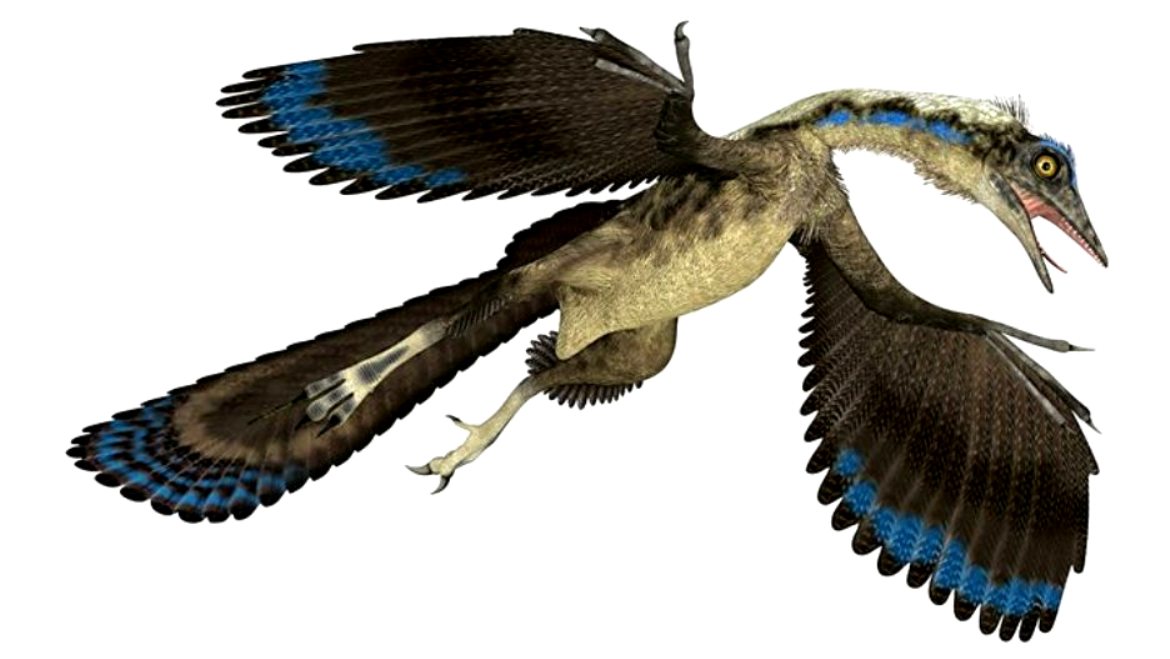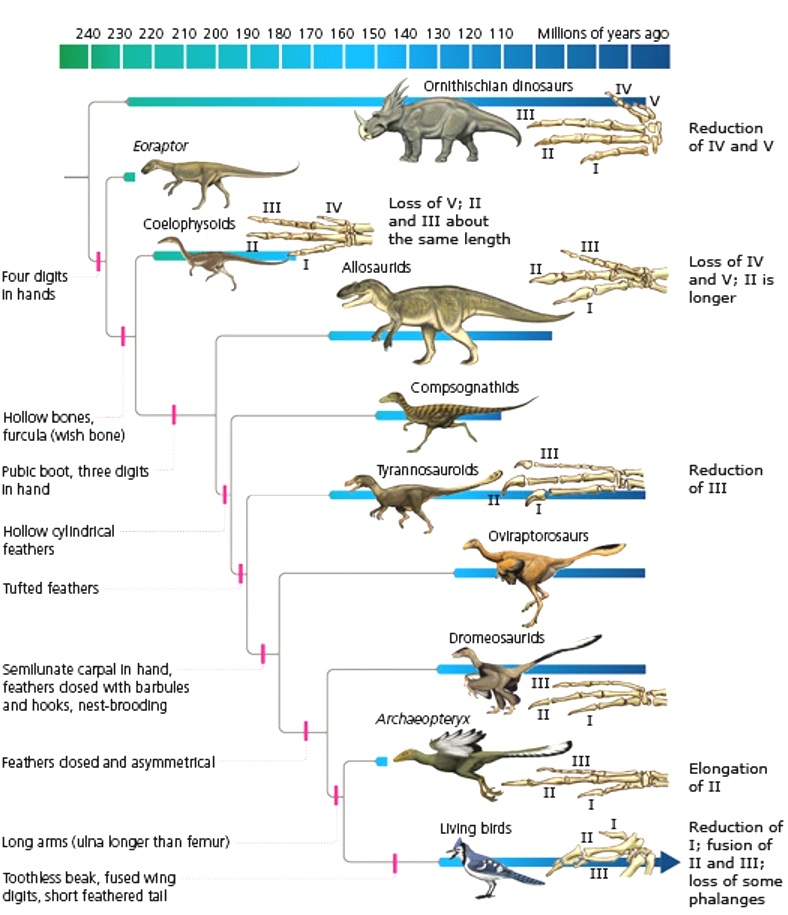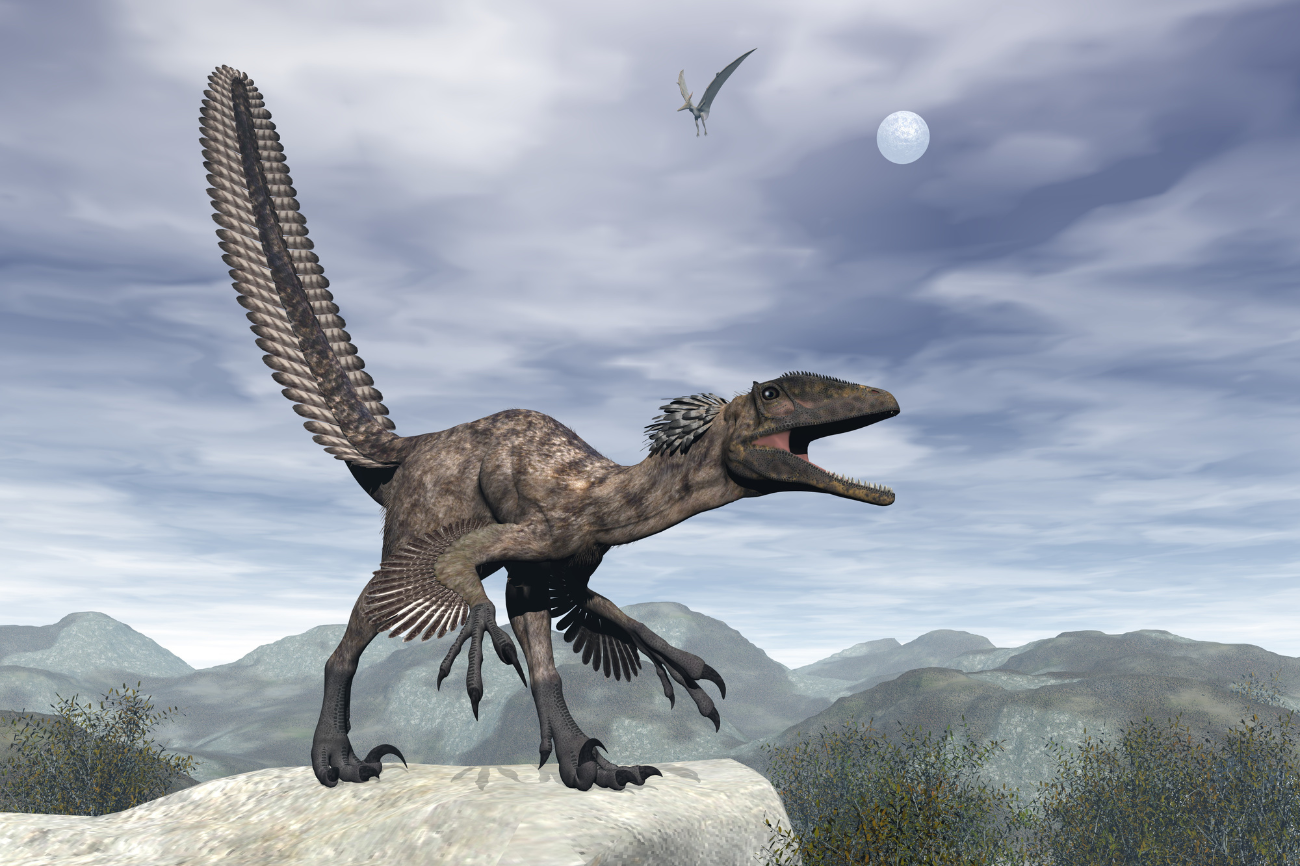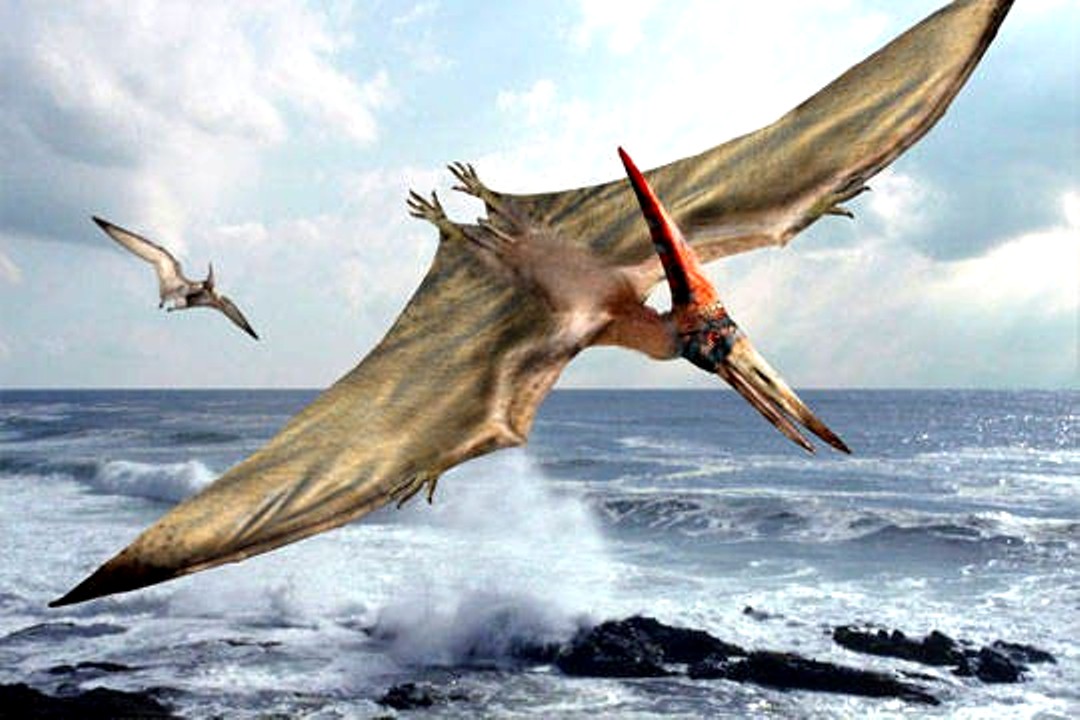
On this month's Morbidly Fascinating Page:
How did dinosaurs evolve into birds?

Artist rendition of Archaeopteryx (above)


For decades, paleontologists’ only fossil link between birds and dinosaurs was archaeopteryx (Artist rendition at the top of this page), a hybrid creature with feathered wings but with the teeth and long bony tail of a dinosaur. These animals appeared to have acquired their birdlike features — feathers, wings and flight — in just 10 million years, a mere flash in evolutionary time. “Archaeopteryx seemed to emerge fully fledged with the characteristics of modern birds,” said Michael Benton, a paleontologist at the University of Bristol in England.
Discoveries have shown that bird-specific features like feathers began to emerge long before the evolution of birds, indicating that birds simply adapted a number of pre-existing features to a new use. And recent research suggests that a few simple change—among them the adoption of a more babylike skull shape into adulthood—likely played essential roles in the final push to bird-hood. Not only are birds much smaller than their dinosaur ancestors, they closely resemble dinosaur embryos. Adaptations such as these may have paved the way for modern birds’ distinguishing features, namely their ability to fly and their remarkably agile beaks. The work demonstrates how huge evolutionary changes can result from a series of small evolutionary steps.
In the 1990s, an influx of new dinosaur fossils from China revealed a feathery surprise. Though many of these fossils lacked wings, they had a panoply of plumage, from fuzzy bristles to fully articulated quills. The discovery of these new intermediary species, which filled in the spotty fossil record, triggered a change in how paleontologists conceived of the dinosaur-to-bird transition. Feathers, once thought unique to birds, must have evolved in dinosaurs long before birds developed.
“A bird didn’t just evolve from a T. rex overnight, but rather the classic features of birds evolved one by one; first bipedal locomotion, then feathers, then a wishbone, then more complex feathers that look like quill-pen feathers, then wings,” Stephen Brusatte, a paleontologist at the University of Edinburgh in Scotland, said. “The end result is a relatively seamless transition between dinosaurs and birds, so much so that you can’t just draw an easy line between these two groups.”
See the entire article in Scientific American HERE

Artist rendition of a Velociraptor
Recent research on one of the species, Velociraptor mongoliensis, has found that Velociraptor was a feathered dinosaur. But it couldn't fly—its forelimbs were too short. Instead, the plumage might have been used to keep it warm and attract mates, just as modern birds use their colorful feathers.

Artist rendition of a Coelurosaur
Are Birds Really Dinosaurs?
Coelurosaurian dinosaurs are thought to be the closest relatives of birds, in fact, birds are considered to be coelurosaurs. This is based on Gauthier's and others' cladistic analyses of the skeletal morphology of these animals. Bones are used because bones are normally the only features preserved in the fossil record. The first birds shared the following major skeletal characteristics with many coelurosaurian dinosaurs (especially those of their own clade, the Maniraptora, which includes Velociraptor):
- Pubis (one of the three bones making up the vertebrate pelvis) shifted from an anterior to a more posterior orientation (see Saurischia), and bearing a small distal "boot".
- Elongated arms and forelimbs and clawed manus (hands).
- Large orbits (eye openings in the skull).
- Flexible wrist with a semi-lunate carpal (wrist bone).
- Hollow, thin-walled bones.
- 3-fingered opposable grasping manus (hand), 4-toed pes (foot); but supported by 3 main toes.
- Reduced, posteriorly stiffened tail.
- Elongated metatarsals (bones of the feet between the ankle and toes).
- S-shaped curved neck.
- Erect, digitgrade (ankle held well off the ground) stance with feet postitioned directly below the body.
- Similar eggshell microstructure.
- Teeth with a constriction between the root and the crown.
- Functional basis for wing power stroke present in arms and pectoral girdle (during motion, the arms were swung down and forward, then up and backwards, describing a "figure-eight" when viewed laterally).
- Expanded pneumatic sinuses in the skull.
- Five or more vertebrae incorporated into the sacrum (hip).
- Straplike scapula (shoulder blade).
- Clavicles (collarbone) fused to form a furcula (wishbone).
- Hingelike ankle joint, with movement mostly restricted to the fore-aft plane.
- Secondary bony palate (nostrils open posteriorly in throat).
- Possibly feathers... this awaits more study. Small, possibly feathered dinosaurs were recently found in China. It appears that many coelurosaurs were cloaked in an external fibrous covering that could be called "protofeathers."
See the entire article HERE
What were Pterodactyls?

Artist rendition of a Pterodacytl
Neither birds nor bats, pterosaurs (pterodacytls) were reptiles, close cousins of dinosaurs who evolved on a separate branch of the reptile family tree. They were also the first animals after insects to evolve powered flight—not just leaping or gliding, but flapping their wings to generate lift and travel through the air. They evolved into dozens of species. Some were as large as an F-16 fighter jet, and others as small as a paper airplane.
Around 66 million years ago, at the same time that Tyrannosaurus rex and other large dinosaurs became extinct, pterosaurs also died out. Pterosaurs left no descendants—only fossils.